March 30, 2022
Blackheath Observing Event – 25 March 2022
Report by: Tej Dyal
On Saturday, 18th January 2020, we gathered on Blackheath Common looking thoughtfully up at what the night sky was offering. Members with telescopes entertained the public with views into the cosmos, trying to dodge the cloud patches that skimmed past, and as the evening rolled on, whimpers could be heard as the cold air was biting ever harder. Soon, everyone had their fill of cosmic treats, constant chatter, and numbing feet, parting ways with the innocent words of:
“That was fun. See you next month”…
Two years, two months and seven days later, The new world
On Friday 25th March, 2022 Blackheath Observing was back. The Skies of Blackheath were so delighted to see us dear old friends again that we were greeted by the clearest night we could remember. Not the faintest hint of cloud in sight.
As the organisers headed early to the common to set up the telescopes before the official start time, our memories were somewhat vague as to how we usually got there. Was it the normal route along the A2 or was it on the B112 off the A20? What were the two buses that I usually took to get there…or wait, was it by train?
I was the first to arrive, startled to find a new painted football pitch engulfing our normal stargazing spot. A few footballers were around but, thankfully, not officially playing and, as the daylight diminished, so did the footballers. As we early arrivals setup our telescopes in preparation to entertain whoever came to join us, we couldn’t help glancing, annoyed, at the elephant on the common, a fully sparkling funfair just a hundred yards away! No doubt also cherishing a long-anticipated return to the common, albeit, for us, with unfortunate timing. However, most of our intended cosmic targets were away from that direction, so the funfair was not a major hindrance. Actually, I used to love funfairs…I wondered if I might get a moment to go on the bumper cars…?
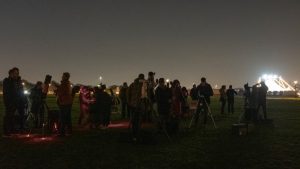
“Funfair beckons in Background but we’re not here for that!
With the night sky taking center stage, more people arrived…and continued to arrive…and they kept on coming until the common was absolutely buzzing with cheers and chatters from new and familiar faces. Almost everyone I knew from past events of the old world were there; the regulars, the occasional and new generation observers. I couldn’t help feeling a sense of euphoria akin to a Field of Dreams moment, “if we build it, they will come”.
So, with such a fine turn out, and the clearest of clear skies you can imagine, what treats awaited us? Mike Meynell brought a peculiar looking contraption called a Stellina… which I figured was from the future, year 2070. Mike denied he time travelled but I recognised the “robot”, straight away. It was clearly Matthew McConaughey’s robot companion, TARS, from Interstellar, sporting an Apple skin aesthetic. As always, being the astro guru that he is, Mike justifiably attracted a sizeable crowd as they were first shown The Leo Triplet in vivid detail. Yes, the Leo Triplet of closely grouped galaxies. Not a target one expects to see in the light-polluted skies of Blackheath. But TARS…I mean the Stellina is no ordinary telescope.
It’s the first of a new breed of smart telescopes that has a built-in camera, self-calibration and delivers live stacking images of it’s targets to an Ipad for all observers to see in real time. Mike predicts this will be the only way to enjoy stargazing in future as light pollution rapidly increases. Witnessing the astounding details this telescope delivers, it certainly is an impressive solution. Mike then commanded his “robot” to progress onto other exotic deep space targets that were not achievable through normal eyepiece telescopes in these light polluted skies, which of course continued to wow the admiring crowd.
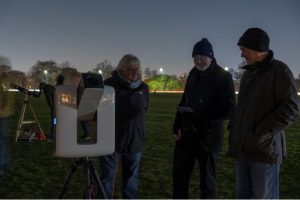
“Mike Meynell commands his robot from Interstellar to take Adrian and Andy to Orion”
Meanwhile, many attendees came with traditional telescopes of all types and sizes. Despite the noticeable increase in light pollution over the last couple of years, we were still able to enjoy a plethora of targets, starting with one of our favourites, The Orion Nebula. Those baby stars forming the trapezium, still happily playing with the dust in their nebula nursery was a comforting and familiar sight to see again. Observers with UHC or OIII filters were also able to counter the light pollution very effectively, showing off nebulae with vivid results. So, take that, you…you strange looking robot, all is not lost with the traditional scopes! But wait! Mike wasn’t the only one with a smart telescope. Two other attendees came with similar tech called EvScope but theirs took the form of conventional Newtonian style telescopes. One of the owners, Richard Summerfield, invited me to look through the eyepiece of his rig. Unawares of what the telescope was at the time, I obliged…then staggered back. What was this sorcery? It was the Orion Nebula but in impossibly glorious detail and so very rich in colour! My leg was being pulled here, surely? Then the magic was revealed, as Richard explained: I really was observing the Orion Nebula in real time but live stacked and projected onto an eyepiece display, all within the scope itself. So, unlike Stellina where we view the live image stacking on an Ipad,
on the EvScope, we view it through an “eyepiece” retaining the motion and sensation of traditional eyepiece viewing. Marvelous for those that crave the traditional feel of visual astronomy.
So, whatever personal preferences anyone had about observing the night sky, we certainly had a delightful range of ways to enjoy the universe that night!
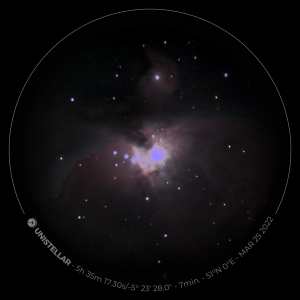
“Orion Nebula through the electronic eyepiece on Richard Summerfield EvScope”
Other targets enjoyed were, M1 Crab Nebula, M3 Globular Cluster, the Beehive Cluster, Castor double star, M81 Cigar galaxy and several star clusters embedded in the Milky Way (invisible to the naked eye) arching away in the south. We even got to wave at an ISS flyby thanks to a last-minute alert on Andy’s app; a solid white speck approaching from the western horizon, skimming directly towards us then passing overhead as if to congratulate our return to the common.
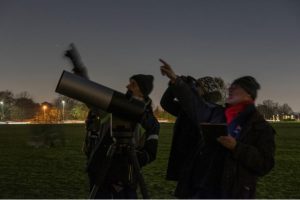
“The ISS approaches Blackheath Common!”
As the evening progressed towards the sleeping hours, the group of 50-ish attendees slowly dispersed until a handful of us organisers and helpers remained, packing and scanning the area for any items that may have been accidentally dropped by attendees. As we headed to the car park, I glanced ever so fleetingly and fancifully at the funfair…no, I was content. I was more than content. A most wonderful evening was had by all, finally, to once more share the joys of stargazing amongst experienced enthusiasts and newcomers.
As we parted ways we nodded to each other, rather defiantly, with the words:
“That was fun. See you next month”
Thanks to all who attended with and without telescopes making this event the best return to the common we could hope for and a special thanks to Mike Meynell, Helen Edwards, Gurinder Lall, Barry Cassels, Andy Sawers, Adrian Challinor and Bobby Manoo for assisting in various invaluable ways at the event.
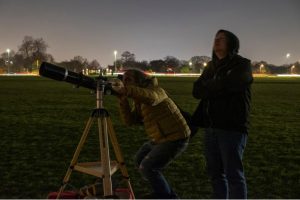
“Barry explains Castor star is actually 6 stars…but they can only see two!”
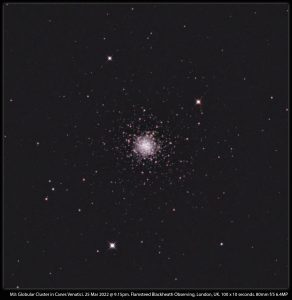
“M3 Globular Cluster from Mike Meynell’s Stellina”
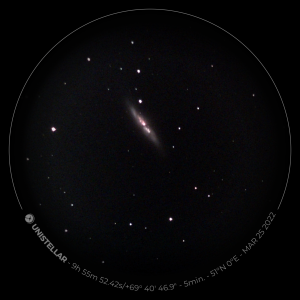
“M81 Cigar Galaxy through the eyepiece of Ron Straughan’s EvScope”
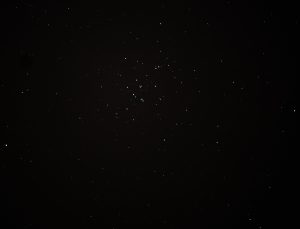
“Beehive Cluster by Thomas Obitz”
Posted under: Blackheath, Flamsteed, Meeting Report, Observing and Imaging Group, Stargazing

You must be logged in to post a comment.